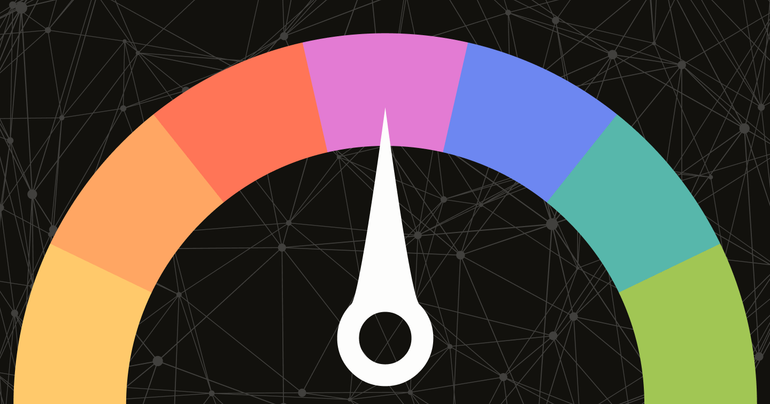-
 Guide Data Labeling with GPT-4 in Label Studio: ML Backend Integration
Guide Data Labeling with GPT-4 in Label Studio: ML Backend IntegrationThis blog shows how to integrate GPT-4 with Label Studio to shift from manual labeling to faster label review. Use OpenAI’s API and the ML Backend to streamline text annotation and accelerate NLP workflows.
 Jimmy Whitaker
Jimmy Whitaker -
 Guide How to Label Spectrograms for AI Models
Guide How to Label Spectrograms for AI ModelsYou can now label audio data for training or fine-tuning AI models using spectrograms. This blog outlines what this means for you and how might it be helpful.
 Micaela Kaplan
Micaela Kaplan -
 Guide Markov Models: Chains to Choices
Guide Markov Models: Chains to ChoicesThis post breaks down Markov Chains and Markov Decision Processes with intuitive examples and a video walkthrough.
 Micaela Kaplan
Micaela Kaplan -
 Guide How to Use Krippendorff’s Alpha to Measure Annotation Agreement
Guide How to Use Krippendorff’s Alpha to Measure Annotation AgreementLearn how to calculate Krippendorff’s alpha to measure annotator agreement, even with missing data. This guide walks through a real example step by step.
 Micaela Kaplan
Micaela Kaplan -
 Guide Everybody Is (Unintentionally) Cheating
Guide Everybody Is (Unintentionally) CheatingAI benchmarks are breaking under pressure. This blog explores four ways to rebuild trust, governance, transparency, better metrics, and centralized oversight.
 Nikolai Liubimov
Nikolai Liubimov -
 Guide 3 Annotation Team Playbooks to Boost Label Quality and Speed
Guide 3 Annotation Team Playbooks to Boost Label Quality and SpeedNot every ML team looks the same and your labeling workflow shouldn’t either. In this guide, we break down three common annotation team setups and how to tailor your tools and processes to boost quality, speed, and scale.
 Alec Harris
Alec Harris -
 Guide Seven Ways Your RAG System Could be Failing and How to Fix Them
Guide Seven Ways Your RAG System Could be Failing and How to Fix ThemThis post explores seven common RAG failured, from missing top-ranked documents to incorrect formatting, and provides practical solutions to improve retrieval accuracy, ranking, and response quality.
 Micaela Kaplan
Micaela Kaplan -
 Guide Evaluating Mistral OCR with Label Studio
Guide Evaluating Mistral OCR with Label StudioMistral OCR is setting a new standard for document understanding, but how well does it perform on your data? Using Label Studio, you can evaluate its accuracy, compare outputs, and fine-tune results. In this post, we walk through the process and share a hands-on handbook to get started.
 Micaela Kaplan
Micaela Kaplan -
Never miss
an update.Subscribe for news.
-
 Guide Reinforcement Learning from Verifiable Rewards
Guide Reinforcement Learning from Verifiable RewardsLearn about Reinforcement Learning with Verifiable Rewards, one of the leading training strategies for injecting learning signals into LLMs, successfully employed by models such as DeepSeek R1 and Tülu 3.
 Nikolai Liubimov
Nikolai Liubimov -
 Guide Content Moderation Labeling with Label Studio
Guide Content Moderation Labeling with Label StudioGet started with content moderation labeling to classify potentially harmful data for training purposes, or evaluate the output of a model you already have in place.
 Micaela Kaplan
Micaela Kaplan -
 Guide Evaluating Multi-Turn LLM Chat Conversations Using Label Studio
Guide Evaluating Multi-Turn LLM Chat Conversations Using Label StudioEvaluating multi-turn conversations with Label Studio helps identify performance gaps, refine responses, and improve user experience for a more effective virtual assistant.
 Jimmy Whitaker
Jimmy Whitaker -
 Guide Fine-Tuning OpenAI Models: A Guide with Wikipedia Data
Guide Fine-Tuning OpenAI Models: A Guide with Wikipedia DataGo through the entire fine-tuning process on OpenAI’s platform—from preparing recently-posted Wikipedia data to estimating costs and deploying your fine-tuned model.
 Jimmy Whitaker
Jimmy Whitaker -
 Guide Webhooks in Label Studio: When And How To Use Them
Guide Webhooks in Label Studio: When And How To Use ThemLearn when you should use webhooks vs. the API in Label Studio, and see examples of what you can do with webhooks.
 Caitlin Wheeless
Caitlin Wheeless -
 Guide Object Detection With Ultralytics YOLOv8
Guide Object Detection With Ultralytics YOLOv8Learn how to use Ultralytics YOLOv8 object detection model with Label Studio.
 HumanSignal Team
HumanSignal Team -
 Guide LLM Evaluations: Techniques, Challenges, and Best Practices
Guide LLM Evaluations: Techniques, Challenges, and Best PracticesExplore the topic of evaluation for LLMs, its importance, and how we should approach it. Learn how integrating systematic evaluations can help teams iteratively refine their models to meet real-world needs.
 Jimmy Whitaker
Jimmy Whitaker -
 Guide How to Build and Evaluate RAG Applications with Label Studio, OpenAI & Ragas
Guide How to Build and Evaluate RAG Applications with Label Studio, OpenAI & RagasIn this tutorial, we'll guide you through the process of setting up and using Label Studio in combination with Ragas (Retrieval-Augmented Generation Answer Scoring) and GPT-4 to build an optimized QA application.
 Jo Booth
Jo Booth -
 Guide Key Considerations For Evaluating RAG-Based Systems
Guide Key Considerations For Evaluating RAG-Based SystemsImplementing RAG-based systems comes with challenges to be aware of, particularly in assessing the quality of generated responses. This article will walk you through some of those challenges.
 Jo Booth
Jo Booth -
 Guide 3 Ways To Automate Your Labeling With Label Studio
Guide 3 Ways To Automate Your Labeling With Label StudioDelve into three effective methods to automate your labeling using Label Studio, including examples and resources.
 Nate Kartchner
Nate Kartchner -
 Guide LLM Evaluation: Comparing Four Methods to Automatically Detect Errors
Guide LLM Evaluation: Comparing Four Methods to Automatically Detect ErrorsAn ongoing challenge for Large Language Models (LLMs) is their tendency to hallucinate. In this article, we explore four methods to automatically detect these errors.
 Nikolai Liubimov
Nikolai Liubimov -
 Guide Do I Need to Build a Ground Truth Dataset?
Guide Do I Need to Build a Ground Truth Dataset?The short answer is: it depends. Read on as we explore this topic further, uncovering the advantages and drawbacks of each approach to help you make an informed decision.
 Label Studio Team
Label Studio Team -
 Guide Enhancing Data Quality with Label Studio Automated Workflows
Guide Enhancing Data Quality with Label Studio Automated WorkflowsThis post will take you through the intricacies of data quality, the strategies employed to build top-tier datasets, and how to use Label Studio Enterprise to engineer your AI/ML success.
 Label Studio Team
Label Studio Team -
 Guide What’s a Ground Truth Dataset?
Guide What’s a Ground Truth Dataset?Understanding the distinction between regular datasets and ground truth datasets is crucial for leveraging data effectively in machine learning and data analysis tasks. This article explores both concepts and digs deeper into the importance of ground truth datasets.
 Label Studio Team
Label Studio Team -
 Guide Fine-Tuning Generalist Models for Named Entity Recognition
Guide Fine-Tuning Generalist Models for Named Entity RecognitionGeneralist models, like GLiNER, provide an excellent starting point for the tasks that they aim to solve. Fine-tuning these models offers us a way to improve their performance in the areas that we care about to solve business problems.
 Micaela Kaplan
Micaela Kaplan -
 Guide Strategies for Evaluating LLMs
Guide Strategies for Evaluating LLMsSure, benchmarks are cool, but they don’t give you the feel or the intuition of how a model actually works. To get that, you’ve got to hack around with the model and throw real-world prompts at it — like you’d do in day-to-day tasks.
 Label Studio Team
Label Studio Team -
 Guide 5 Tips and Tricks for Label Studio’s API and SDK
Guide 5 Tips and Tricks for Label Studio’s API and SDKThese five tips for using Label Studio's API and SDK demonstrate these tools' powerful capabilities and flexibility for managing data labeling projects. From efficient project creation and task imports to advanced configurations and bulk data exports, Label Studio provides a comprehensive and streamlined approach suitable for beginners and advanced users.
 Jimmy Whitaker
Jimmy Whitaker -
 Guide An Introduction to Retrieval-Augmented Generation (RAG)
Guide An Introduction to Retrieval-Augmented Generation (RAG)Get a brief overview of RAG and how it relates to LLMs, learn when you might consider using RAG, and get a summary of some challenges based on current research you should be aware of should you choose to travel down this path.
 Nate Kartchner
Nate Kartchner -
 Guide Medical Data Labeling and Label Studio
Guide Medical Data Labeling and Label StudioFrom precise disease diagnoses to personalized treatment plans, accurately labeled data profoundly impacts healthcare. This guide explores the fundamentals of medical data labeling, its applications, and its evolution through AI.
 Label Studio Team
Label Studio Team -
 Guide 10 Tips to Supercharge Your Data Labeling Efficiency
Guide 10 Tips to Supercharge Your Data Labeling EfficiencyWhen training Large Language Models and utilizing machine learning, the significance of precise and efficient data labeling cannot be overstated. Here are ten actionable tips to elevate your data labeling processes.
 Label Studio Team
Label Studio Team -
 Guide Four Pillars of an Optimal Data Labeling Process
Guide Four Pillars of an Optimal Data Labeling ProcessThe realm of data labeling is undergoing significant transformations, reflecting the dynamic nature of the tech industry. Here are some of the most notable trends and their implications.
 Label Studio Team
Label Studio Team -
 Guide Enhance Your Data Labeling Workflow With a Machine Learning Backend
Guide Enhance Your Data Labeling Workflow With a Machine Learning BackendIntegrating a machine learning (ML) backend into the data labeling process for a labeling platform can significantly enhance the efficiency and accuracy of the process.
 Label Studio Team
Label Studio Team